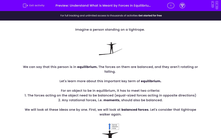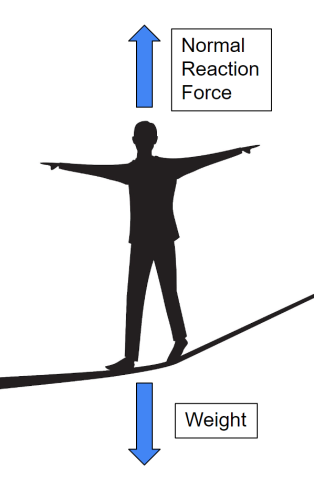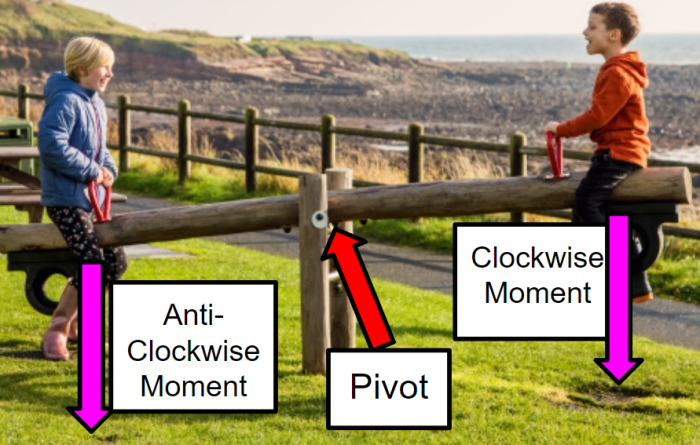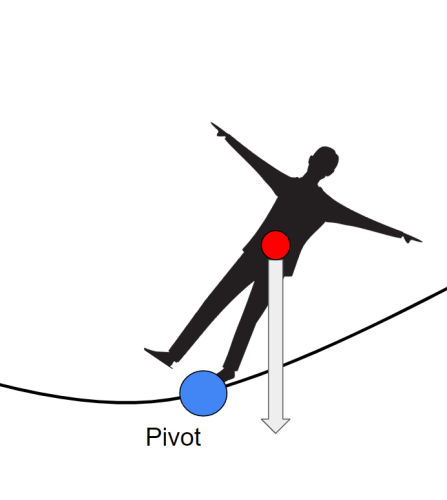Imagine a person standing on a tightrope.

We can say that this person is in equilibrium. The forces on them are balanced, and they aren't rotating or falling.
Let's learn more about this important key term of equilibrium.
For an object to be in equilibrium, it has to meet two criteria:
1. The forces acting on the object need to be balanced (equal-sized forces acting in opposite directions)
2. Any rotational forces, i.e. moments, should also be balanced.
We will look at these ideas one by one. First, we will look at balanced forces. Let's consider that tightrope walker again.
Two main forces are acting on them - their weight acting downward, and the normal reaction force acting upward. The forces are balanced. The reason we can say they are balanced is that they are the same size (the lengths of the arrows are the same) and are in opposite directions.
So, in terms of forces, the walker is in equilibrium.
When the forces on an object are balanced, the object's motion will not change. In the case of our walker, they would stay still.
However, we also said that we had to check if there are any rotational forces, and if there are, they also need to be balanced. That's the second condition for equilibrium.
As a reminder - sometimes a force can cause a rotation of an object. The rotational effect of a force is called the moment.
This is a see-saw with two children on it. In the centre is a pivot, the point around which everything rotates.
The child on the left has weight, and that force causes a turning effect, or moment, on that side. This moment is anticlockwise.
The child on the right has weight, and that force also causes a moment, in this case, it is clockwise.
If both moments were the same size, then the see-saw would balance. We could say that the see-saw and the children are in equilibrium.
Let's go back to our tightrope walker. We already know the forces on them are balanced. But are the moments balanced?
If the tightrope walker is good at maintaining their balance, there won't be any moments in either direction. However, if the walker accidentally leans too far over, they can cause a moment, as in the image below.
In this case, the walker is not in equilibrium. The walker would topple and fall.
Now that we know the two key rules for equilibrium, and have seen some examples, let's try some questions!











